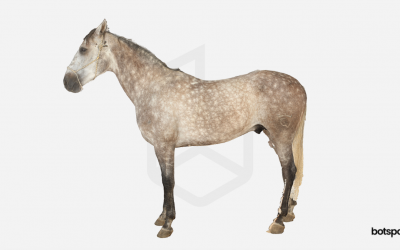3D AVATARS IN THE WORLD OF FASHION
Today, fashion is no longer a purely aesthetic phenomenon, but also has a social and economic dimension. Since the introduction of mass production and the resulting democratization of the clothing industry, it is theoretically accessible to everyone and became an important economic factor.
Clothing no longer serves an exclusively functional purpose, but also satisfies the need for self-realization and individuality. Online stores are realising this by steadily rising sales figures. So it is not surprising that not only the big names in this industry are increasingly willing to adapt the latest technologies for more customer satisfaction.
3D avatars have the potential to simplify the purchasing process for consumers and manufacturers and save time and money. Numerous application examples are imaginable or already realized.
DIGITAL PRODUCTION
With the help of a full body scanner such as the BOTSCAN NEO by botspot, a high-precision scan of the customer can be created at the point of sale. In the future, this scan will be used in the online store of the merchant for a tailor-made fitting. This scan is completely harmless and can be repeated in the fashion store as often as wanted. The latest software allows even a realistic simulation of the fall of the folds on the 3D avatars.
The customer’s 3D template can then not only be used to find the right size, but can also be directly integrated into the product development process. This so-called mass customization allows to reduce the storage costs and overproduction drastically, which seems much more contemporary in terms of sustainability.
ENORMOUS SAVINGS POTENTIAL
Since purchase decisions in classic shopping are usually made after a fitting in the changing room and this step has not been possible online until now, consumers usually order several sizes with the intention of keeping only one. Therefore, it is not surprising that a large number of packages are sent back and the return costs for online retailers amount to several billion euros annually.
When we look at further figures, it becomes clear how big the savings potential is: Around 50% of all clothing items are returned to the seller – for shoes it is up to 70%. An online retailer pays an average of 15 euros for a return, and not even half of the returned items are re-sold. In the face of these facts, it is unfortunately not yet possible to speak of a sustainable production. If customers were able to see how certain clothes look on them and how different sizes fit before placing an order, many of these returns would be obsolete – to the benefit of both sides.
This dilemma is becoming increasingly clear to manufacturers and vendors, so that the services offered by companies like Avalution are being used by more and more merchants.
With its international body data portal iSize, the Kaiserslautern-based company offers the world’s largest scan- and body measurements database, which can be filtered according to numerous demographic criteria to study its target group accurately. This ensures a high standard of decision-making quality within product policy. Avalution’s more than 300 customers are operating in a many sectors, from automotive to fashion or healthcare and they all benefit equally from improved ergonomics and fitting quality of their products. Furthermore, Avalution provides the international markets with avatars for body measurements and clothing simulation, based on the iSize data.

3D AVATARS ARE AN IMPORTANT FIELD OF RESEARCH
The potential of 3D technology is also becoming an important subject of research: students of the clothing technology course at the Berlin University of Applied Sciences, for example, analyzed the results of a virtual fitting of clothing in regard to the simulated material behavior and compared these with the behavior of the clothing in the real world.
Using a fullbody scanner from botspot, an avatar was created, which was later clothed with the help of special software. Among other things, the research showed that an entirely digital product development process could well be the norm in the apparel industry in the near future and many of the results of the digital fitting seem extremely promising.
However, the pioneering work in this field does not only take place at universities: digital Creative Schirin Negahbani shows with her work that the virtual world can be an exciting playground for self-expression and fashion experiments. Using intelligent software like V-Stitcher for example, she develops digital garments for renowned customers whose creation is not even limited by the laws of physics.
The fact that the fashion world adopts diverse inspirations and uses the latest techniques is nothing new and is probably in its nature. Fashion gives us a second body, in addition to our natural one – a body for whose design we will continue to apply a high level of technical skill and creativity.
Photo Credit: https://polygondressing.com


